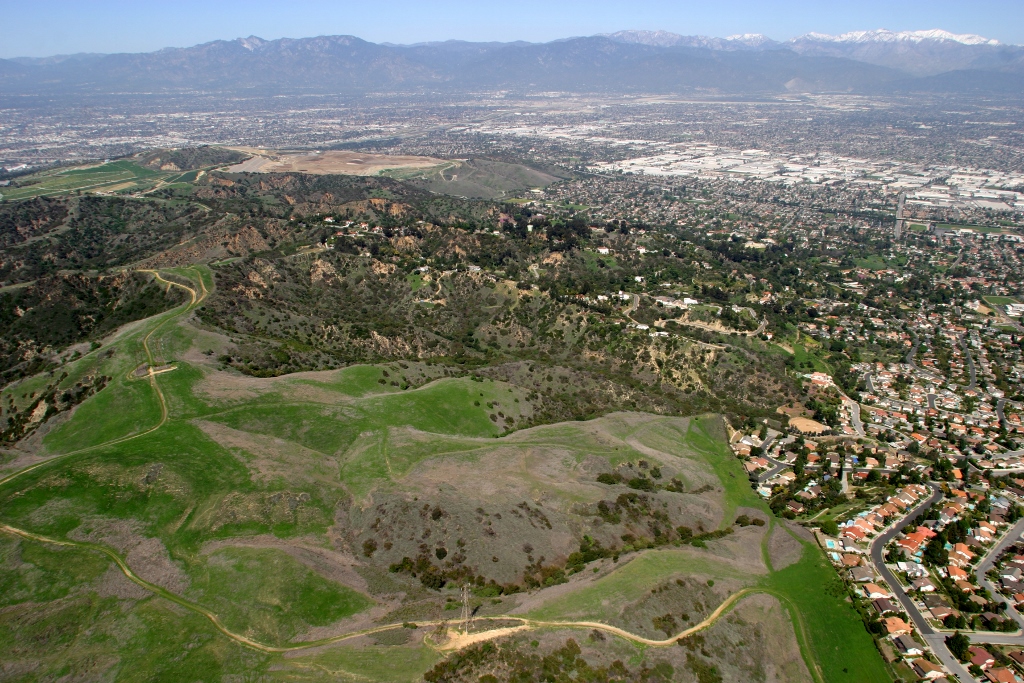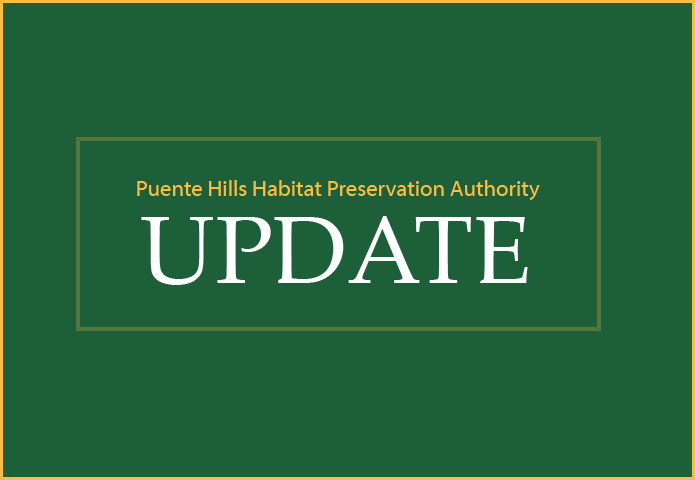After 56 years of operation, the Puente Hills Landfill which is the main funding source for the Puente Hills Habitat Preservation Authority (Habitat Authority) is shutting down at end of the business day on October 31, 2013, but the Habitat Authority will continue on with its daily operations.
The Habitat Authority, for the past nineteen years (since 1994), has received $1 per ton of trash deposited into the Puente Hills Landfill for the purposes of land acquisition for preservation in perpetuity, native habitat restoration, and other management of the Puente Hills Preserve. This equates to approximately $64 million dollars in total. The Habitat Authority has established an endowment of $29 million which generates significant revenue. Since its inception, the Habitat Authority has accomplished the following with the funding from the landfill:
• Purchased 1,888 acres. Total preserved wildlands managed in the Puente Hills are 3,870 acres,
• Conducted restoration of 179 acres of native habitat, and is in the process of restoring an additional 30 acres (209 in total), and
• Conducted educational programming for over 13,000 people from local communities through the Jr. Ranger Program, Hills Alive, docent-led Public Hikes, and other educational efforts.

The Habitat Authority is proud of what it has accomplished with the landfill funding, and will continue to exist in its current formation with its Board of Directors consisting of the County of Los Angeles, the City of Whittier, Hacienda Heights Improvement Association, and the Sanitation Districts of Los Angeles County. The Board is committed to ensuring that promises made for the preservation, restoration and management of the lands will be kept. The Habitat Authority does not anticipate daily operations to be affected by the landfill closure.
So what will happen to the landfill? The landfill properties span 1,365 acres, some of which will retain an active Materials Recovery Facility (MRF). The closure process of the landfill will take approximately 18 months, after which it will be turned into a protected park operated by Los Angeles County Department of Parks and Recreation. Some of the area will be for low-impact recreation and others areas will be for natural habitat preservation. There will be a public planning process conducted by the County of Los Angeles to occur in the upcoming years. Also, three canyons consisting of 225 acres are currently designated as a native preservation area managed by the Habitat Authority, and will continue to be so.
The unique arrangement between the entities that make up the Habitat Authority has proven to be successful for local communities and the natural environment. It is a model for other landfill systems that want to give back to communities and protect natural lands while providing them necessary services.


